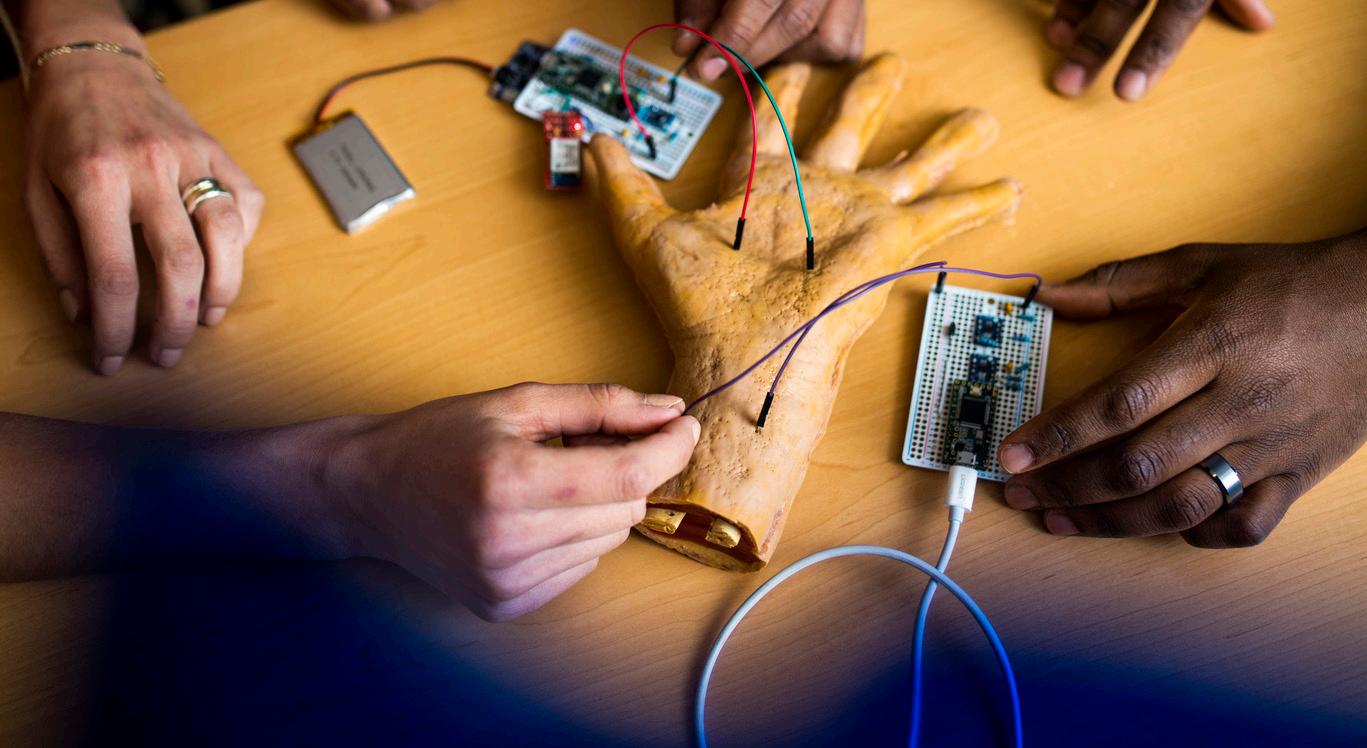
3 minute read
Radio Device Fingerprinting
Machine learning algorithms make signal identification practical on a massive scale
Every wirelessly connected device in the global wireless Internet of Things communicates via radio transmitters and receivers. Even when multiple devices are transmitting the same information, each device imprints its own unique signal pattern on the transmission that makes it possible to identify individual smartphones or laptops.
“Due to manufacturing variances, each electronic device has minor hardware differences in its processing chain, which makes it slightly different from every other device,” explains Kaushik Chowdhury, professor of electrical and computer engineering. “You can think of these distinct characteristics as a fingerprint. By studying the unique distortions within a received radio signal, you can identify which device is sending it.”
Identifying the source of a signal has important implications for both cybersecurity and emergency preparedness. By impersonating the signal of an authorized device, cyber terrorists could disrupt the safe operation of an airplane or access critical national security data. In the realm of emergency preparedness, rapidly identifying nearby devices could aid in alerting emergency responders, saving crucial seconds and, potentially, human lives.
Based on these and other important implications of device fingerprinting, the U.S. Defense Advanced Research Projects Agency (DARPA) awarded Chowdhury $1.5 million to optimize the capability. He and an interdisciplinary team are applying machine-learning algorithms to make signal identification practical on a massive scale.
Chowdhury is joined by electrical and computer engineering faculty members Associate Professor Stratis Ioannidis, William Lincoln Smith Professor Tommaso Melodia, and Professor Jennifer Dy. While Chowdhury and Melodia focus research on wireless networks and communications, Ioannidis and Dy have expertise in signal processing. Their shared goal is to adapt machine-learning techniques such as deep convolutional neural networks—which are already proven for image recognition—into the domain of wireless signal pattern recognition.
The team is leveraging the DARPA funding to develop new methodologies and machine-learning architectures that can correctly classify 10,000 devices with an accuracy rate of 99%. The researchers are using a 14-terabyte database of radio transmitters and radio frequency signals collected by DARPA across different wireless channels to demonstrate the robust operation of their innovative new methods.
“Northeastern has worked hard to develop leading expertise in the Internet of Things, recognizing the huge importance of the IoT to society, industry, and the military,” says Chowdhury. “It’s gratifying to see all this expertise coming together to solve a practical problem and achieve a common goal.”

